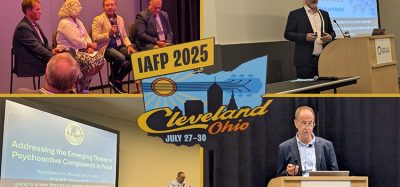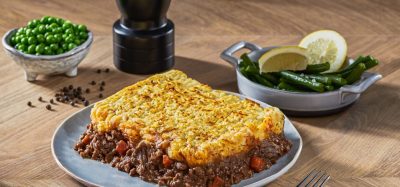Research for industrial implementation
Posted: 6 March 2012 | Astrid Stevik, Research Scientist, SINTEF | No comments yet
In 2007, the Norwegian Research Council and several other funders enabled the (so far) largest competence building project in Norway within superchilling of fresh food, KMB Competitive Food Processing in Norway. SINTEF Energy Research has conducted the work together with dedicated industrial and research partners, and after five years of in-depth research on superchilling, the state-of-the-art boundary for the superchilling concept has been considerably moved.
The superchilling concept, lowering of the product temperature below the initial freezing point of the current product, has been known for decades. In spite of this, the industrial application of superchilling has been prevented by many barriers. Technological challenges have to some extent been an issue, but more important are the rigid conceptions on the disadvantages and limitations of superchilling which have prevented the breakthrough of this powerful tool for prolonging the shelf-life of fresh food. Thus, the KMB project was aimed at lowering the barrier for industrial implementation of superchilling by addressing some of the major challenges and myths through research, development and extensive cooperation with industrial partners.
In 2007, the Norwegian Research Council and several other funders enabled the (so far) largest competence building project in Norway within superchilling of fresh food, KMB Competitive Food Processing in Norway. SINTEF Energy Research has conducted the work together with dedicated industrial and research partners, and after five years of in-depth research on superchilling, the state-of-the-art boundary for the superchilling concept has been considerably moved. The superchilling concept, lowering of the product temperature below the initial freezing point of the current product, has been known for decades. In spite of this, the industrial application of superchilling has been prevented by many barriers. Technological challenges have to some extent been an issue, but more important are the rigid conceptions on the disadvantages and limitations of superchilling which have prevented the breakthrough of this powerful tool for prolonging the shelf-life of fresh food. Thus, the KMB project was aimed at lowering the barrier for industrial implementation of superchilling by addressing some of the major challenges and myths through research, development and extensive cooperation with industrial partners.
In 2007, the Norwegian Research Council and several other funders enabled the (so far) largest competence building project in Norway within superchilling of fresh food, KMB Competitive Food Processing in Norway. SINTEF Energy Research has conducted the work together with dedicated industrial and research partners, and after five years of in-depth research on superchilling, the state-of-the-art boundary for the superchilling concept has been considerably moved.
The superchilling concept, lowering of the product temperature below the initial freezing point of the current product, has been known for decades. In spite of this, the industrial application of superchilling has been prevented by many barriers. Technological challenges have to some extent been an issue, but more important are the rigid conceptions on the disadvantages and limitations of superchilling which have prevented the breakthrough of this powerful tool for prolonging the shelf-life of fresh food. Thus, the KMB project was aimed at lowering the barrier for industrial implementation of superchilling by addressing some of the major challenges and myths through research, development and extensive cooperation with industrial partners.
Findings
One of the most common objections to superchilling is that the freezing process will render the products with a poorer physical quality upon thawing than if the products are iced and stored at chilled conditions.
After several extensive experiments with both meat and fish products, this has not been confirmed. The prolonged microbiological quality of superchilled products is undisputable – and applies to all products that have been tested. Additionally to a major increase in the micro – biological shelf-life, only negligible changes in the physical quality can be seen throughout the storage period. As an example, superchilled salmon fillets stored at superchilled conditions and then thawed gave drip loss values that were one per cent higher than samples stored on ice after 20 days storage. Corresponding results can be seen for meat products.
The sensory quality of superchilled products has been questioned, and currently there is a scarce amount of studies available on this topic.
Recent sensory analyses of superchilled pork steaklets were set up to reveal if a trained panel could distinguish between superchilled and chilled pork chops throughout a storage sequence.
The study also addressed at which point in time the potential difference became significant, and what had caused the difference. Corresponding with former findings, the panel could not distinguish between superchilled and chilled products up to the point where the chilled products had passed the micro – biological level of acceptance (Nofima studier + presentasjon på workshop).
Automatic production lines are a pre – requisite for the industrial implementation of the superchilling concept. Technological solutions as well as on-line equipment for monitoring the key quality parameters relevant for superchilled products are currently available.
There are several vendors that can offer equipment for superchilled production of fresh food. Throughout the project period super – chilling experiments have been performed in freezing tunnels from JBT (John Bean Technologies), freezing CO2 cabinets from Yara Praxair and in Marel Skagin superchilling units. All the mentioned concepts gave good results, and no differences with respect to end product quality, have been seen between the different equipment.
NIR (Near Infrared Spectroscopy) has shown to be a suitable and reproducible method for on-line monitoring and control of the ice fraction in superchilled products. This is a major step forward in order to replace the time consuming and destructive calori – metric measurements of ice fraction. Standard curves have been established for salmon fillets, and corresponding curves can be made for other fresh foods. The NIR equipment is compact, maintenance low and can also be applied for measurements of fat and water content.
The most important quality drivers include the ice fraction, raw material age, raw material temperature, superchilling temperature and ice crystal formation.
The ice fraction is one of the most important parameters to control and ensure a successful superchilling and a high quality end product. When the KMB project started it was considered crucial to hit the aimed ice fraction within quite narrow limits. After many experiments with superchilling of a wide range of products, it can be concluded that if an ice fraction between 5 -20 per cent is achieved, the increased microbiological shelf-life and end product quality is ensured. This robustness was not expected, but constitutes a great possibility when commercialising the superchilling concept.
However, for the raw material temperature and age, the margins are much smaller. It has been shown that ‘old’ salmon fillets (seven days) had no effect of superchilling whatsoever. The normally observed extension in shelf-life during storage was not observed, and this fact is an important guideline to producers on the importance of rapid fresh food conservation. No technology can save a poor raw material.
The temperature of the raw material will have an effect of the ice formation during superchilling. A high product temperature will increase the microbiological activity and increase the needed time period for super – chilling to achieve a certain ice fraction.
The formation of ice crystals also seems to play an important role for the quality of superchilled products. Rapid superchilling at low temperatures (below -30°C) induce the formation of small ice crystals, which apparently is less destructive to the cell structure than superchilling at higher temp – eratures (-10 to -20°C) over a longer time span. Both the JBT impingement freezer and the Yara Praxair LIC cabinet operate at low temp – eratures, and gave products of high physical quality after one to five minutes of superchilling. This was not the situation when superchilling was performed in an in-house air tunnel, operating at -20°C. The process was time consuming, and after 20 minutes of superchilling, the resulting product quality after storage was significantly poorer than after the short, intensive superchilling.
The complex interplay between raw material age and temperature, microbiological start burden and conditions during the superchilling process will be decisive for the quality and shelf life of the end product.
The definition of the superchilled state has been discussed by many instances. Some claim that superchilled products are partly frozen, while others define the products as fresh.
Technically the superchilled products are not frozen, as the cold applied to the product equalises during storage at superchilled conditions and reaches equilibrium, where only a minor amount (5 – 20 per cent) of the water in the product is frozen. All research results from the past few years underpin that super – chilled product can be considered as fresh. Fresh and superchilled products seem to have the same quality profile as well as non distinctive sensory characteristics.
The term superchilling is sometimes related to storage temperatures around 0°C. This is by no means superchilled conditions, since the initial freezing point of the majority of fresh foods would be around -0.5°C. Superchilling has its force related to superchilled conditions along the whole value chain. Superchilled production followed by storage and transport at super – chilled temperature will release the large potential with respect to a high product quality throughout a much longer shelf life than for chilled products. Currently the industrial superchilled often imply that the superchilled conditions are terminated after raw material processing. Even though this has benefits related to the efficiency and product yield, no shelf-life benefits are gained.
Conclusions
When the project started, research and industry partners were eager to investigate many unanswered questions related to superchilling. Through five years of research much knowledge has been built, contributing to lowering the barriers for industrial imple – mentation of superchilling.
To briefly summarise the main conclusions from the studies, it can be concluded that there is no evidence that superchilled products have a poorer quality (microbiological, physical and sensory) than chilled products. The benefits related to superchilling are major. Not only can superchilling enhance increased process capacity and yield, but the shelf life extensions for fresh food, without compromising the end product quality, opens a wide range of possibilities. The raw material can be utilised to a much greater extent, the share of fresh food (instead of frozen) can increase, new markets can be reached and transport can be done without ice which in turn constitutes a large environmental benefit. The impression after five years of research is that superchilling is just about to break the barrier towards extensive industrial application. The concept seems to be an unavoidable option in order to promote environmental friendly processing and thereby ensure a responsible utilisation of the worlds most important energy source; fresh food.
About the author
Astrid Stevik was educated as a civil engineer in biochemistry and process engineering from the Norwegian University of Science and Technology in 1999. She was employed by Nycomed Amersham / GE Healthcare as a Scientist and Project Manager, before joining the research foundation SINTEF Energy in 2007. Her current focus is research and process development on fresh food cold chains as well as project management of international research projects on energy efficiency.







